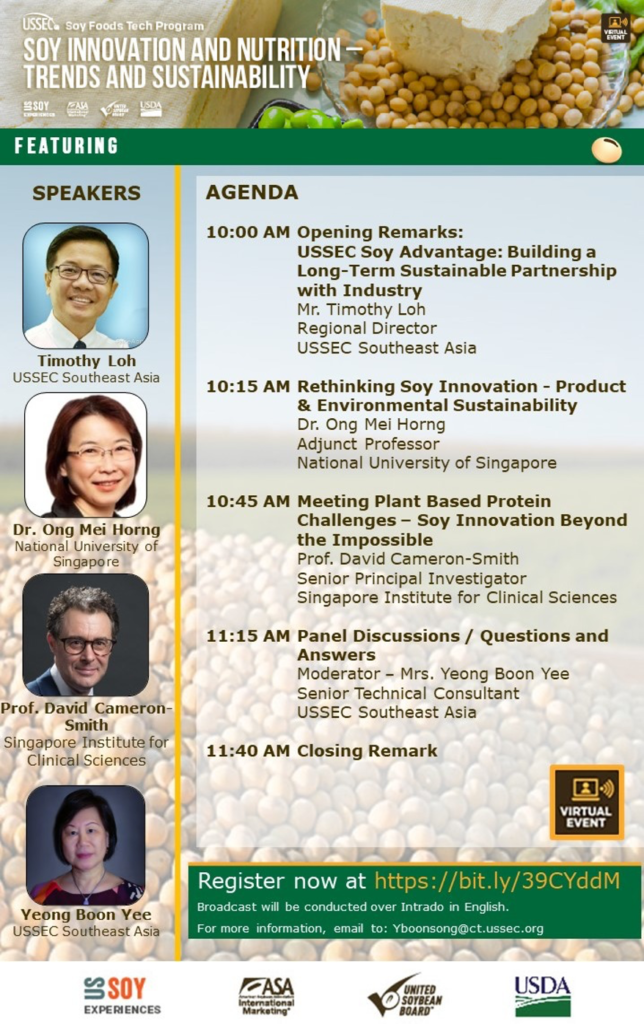Over 150 Soy Food Producers and Stakeholders in Southeast Asia Explore Innovation and Nutrition
- Category:
- Soy Foods
- Virtual Events

Consumer needs and market landscapes are everchanging in the soy food and beverage industry, encouraging innovation. Dr. Ong Mei Horng from the National University of Singapore shared her case on rethinking soy innovation at the U.S. Soybean Export Council (USSEC) Southeast Asia (SEA) Soy Innovation and Nutrition – Trends and Sustainability Webinar in August. Participants included over 150 regional soy food producers, research and development personnel and food researchers keen on soy utilization in foods.
Though soy foods are already common in Asia, Ong believes recent industry developments warrant new discussion. For example, the growing plant-based protein market.
“I do feel that we need to revisit or rethink how soya should play in this new space,” she explained. “Traditionally with plant-based protein, we only thought about soya. Soya was the default. Now, new plant-based proteins are emerging, and emerging quickly.”
While soy’s default could be seen as an advantage, being mindful of up and coming competition is becoming increasingly important, Ong said. Another consideration is the Asian perspective of soy.
In Asia, soy carries unhealthy baggage, Ong explained. There is a continuous misconception that soy is an allergen or can cause cancer. Some believe it can cause males to develop breasts, especially in youth. Others fear additional risks.
Waste in the soy industry could also contribute to skepticism of supporting and utilizing soy foods.
Though Ong provided several challenges facing soy foods in Asia, she did offer proposed considerations. She suggested embracing Product Lifecycle Management using an Integrated Product Development approach and initiating food technology innovation for developing new soy plant-based food and beverages. She also proposed the industry look further into how U.S. Soy could work toward zero-waste, ensuring greater environmental sustainability. Her final consideration was communications-driven, focused on the positioning of soy foods to consumers.
“Consider establishing a Soy Communication & Advocacy Group to develop strategic public health communication to ensure the acceptance of soy in the daily diets of the younger generations and override misperception and misinformation,” Ong said.
Throughout the webinar, additional presentations by Professor David Cameron Smith and USSEC SEA Regional Director Timothy Loh furthered the focus on soy innovation and health trends to encourage soy protein consumption and promote healthy diets in Southeast Asia.
